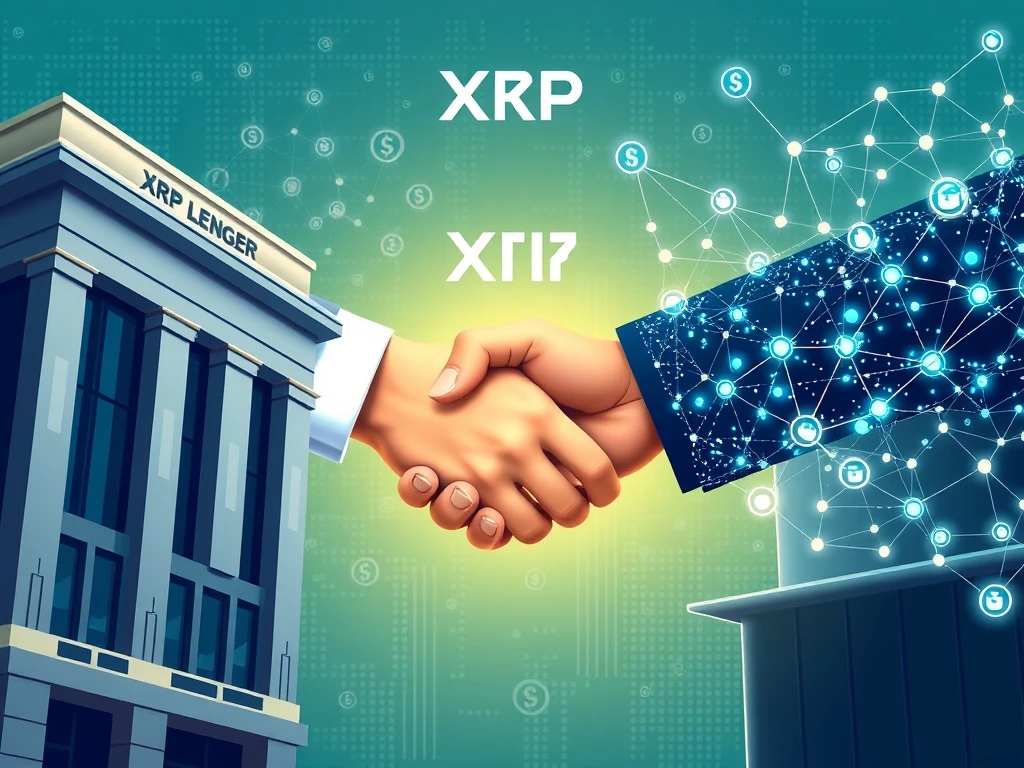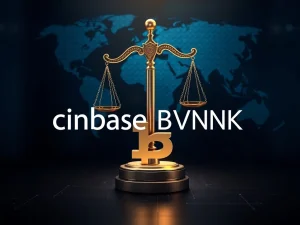Ripple: Strategic Partnership with Guggenheim Boosts Digital Debt on XRP Ledger

The worlds of traditional finance and cryptocurrency continue to converge, with a significant development seeing investment giant Guggenheim partner with Ripple. This collaboration aims to expand Guggenheim’s Digital Debt offerings, leveraging blockchain technology to bring traditional financial products on-chain. It’s a clear signal of the growing interest in RWA tokenization from major players.
Guggenheim and Ripple Launch Digital Debt on XRP Ledger
Under this new partnership, Guggenheim Treasury Services, a subsidiary of Guggenheim, plans to make its US Treasury-backed fixed-income product available on the XRP Ledger. This initiative marks a notable step in bridging the gap between conventional investment products and the digital asset ecosystem.
Key details of the partnership include:
- The asset is a commercial paper product, fully backed by US Treasurys.
- It offers customizable maturity options, extending up to 397 days.
- Ripple is investing $10 million in this asset as part of the collaboration.
- The product will be accessible via the XRP Ledger.
RLUSD’s Potential Role in Accessing Digital Debt
Markus Infanger, an executive at RippleX, indicated that Guggenheim’s digital debt product could potentially be made available for purchase using Ripple’s US dollar-pegged stablecoin, RLUSD. This integration could simplify access for crypto-native investors.
RLUSD has seen significant growth since its launch, with its circulating supply surpassing $350 million. The stablecoin currently operates on both the Ethereum network and the XRP Ledger, providing flexibility for users.
RWA Tokenization: A Growing Trend on Wall Street
This move by Guggenheim is not an isolated event but rather reflects a broader trend of RWA tokenization gaining momentum across Wall Street. Financial institutions are increasingly exploring how to represent real-world assets on blockchain networks to unlock new efficiencies and accessibility.
Examples of this trend include:
- BlackRock’s USD Institutional Digital Liquidity Fund (BUIDL) on Ethereum.
- Franklin Templeton’s OnChain US Government Money Fund.
- Fidelity’s tokenized US dollar money market fund.
Guggenheim itself has prior experience in this space, having tokenized a $20 million commercial paper offering on the Ethereum blockchain in September 2024.
Expanding Access to Tokenized Assets
Beyond major institutions, crypto-native companies are also working to make tokenized assets more accessible to a wider investor base. For instance, German tokenization protocol Midas recently launched a tokenized Treasury bill on the Algorand blockchain. Unlike institutional products that may have high minimums, Midas’ offering has no investment minimums, broadening participation.
The market for tokenized US Treasurys has seen substantial growth, now amassing more than $7 billion in value across various platforms.
The Ecosystem Supporting RWA Tokenization Growth
Investment in the infrastructure supporting RWA tokenization is also increasing. Blockchain-focused venture firm Jump Crypto recently made a strategic investment in Securitize, the platform behind BlackRock’s BUIDL fund. Securitize has rapidly accumulated over $4 billion in onchain assets, with BUIDL accounting for a significant portion of that value, nearing $3 billion.
This investment highlights the confidence in the platforms enabling the tokenization of real-world assets and the increasing demand for such products.
Conclusion
The partnership between Guggenheim and Ripple to bring a Digital Debt product to the XRP Ledger is a significant development in the convergence of traditional finance and crypto. It underscores the increasing adoption of RWA tokenization by major financial players and the potential for blockchain technology to revolutionize how fixed-income and other traditional assets are managed and traded. As the ecosystem matures and more products become available on-chain, the accessibility and efficiency of these markets are likely to improve for a wider range of investors.







